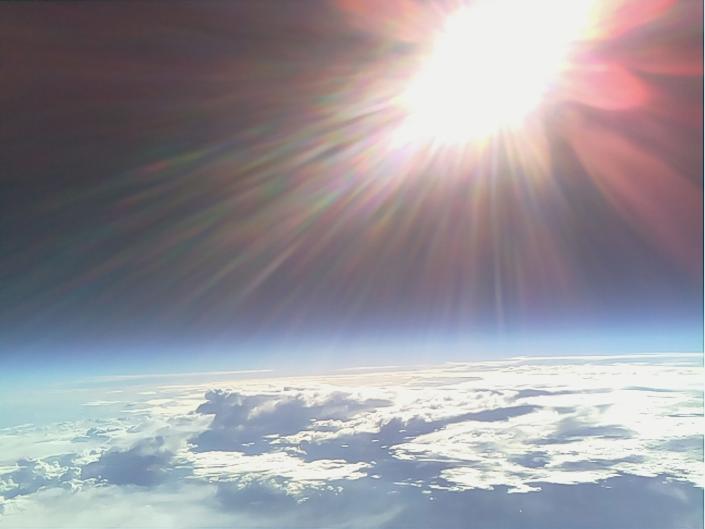Balloons detect mysterious sounds in the stratosphere below the human hearing limit. Scientists can't explain.

Views (142)

Solar-powered balloons in the stratosphere can hear ocean waves crashing, wind turbines spinning, earthquakes rumbling, and a mysterious crackling.
Listen to the sounds a balloon hears 12 miles above Earth: from ocean waves to volcanic eruptions.
"In the infrasound domain our planet is very rich," Bowman, a scientist at Sandia National Laboratories, told Insider. "I think one of the reasons humans can't hear infrasound is because we'd go nuts if we could."
Take the sound of the ocean, which you can hear alongside the mystery sound in the recording below. This is 19 days of infrasound recordings, sped up by 4,400 times.
The first thing you hear is the sound of ocean waves crashing, far below. That's the sighing sound in the background. If you could hear that with your own ears, it would be as loud as watching TV, and it would go on for days.
Then there's a flurry of crackling and rustling. That's the mystery sound.
It could be turbulence, distant thunderstorms, or meteors burning up as they plummet through the atmosphere. According to Bowman, this noise also appeared in the last infrasound balloon program in the 1960s.
"We've been picking it up 50 years ago and we're still picking it up, still don't know what it is," Bowman said.
Almost every flight picks up unidentified sounds, according to Bowman.
"It's not like there's something inherently mysterious or really profoundly different up there. It's more due to our own ignorance," he said.
The world of infrasound is vast and largely unmapped. In the lower parts of the atmosphere, sound bends upwards, so the stratosphere is the perfect place to hear the hidden sounds of the planet — even from events thousands of miles away.
Bowman started using these balloons to listen for the rumblings of volcanoes, hoping to contribute to understanding them better and maybe even improving early-warning systems for eruptions. But it turns out there's even more to hear in the stratosphere.
But Bowman wants to see more people flying infrasound-recording stratosphere balloons.
"This is something that a group of middle schoolers could do," he said. "The more eyes in the sky, or ears in the sky we get, the more we learn."
He estimates that his research team has flown 100 of these balloons, each one made of just $50 of materials that you can buy at a hardware store.
Weather balloons are often designed to rise up and up and up, gathering data all the way, until they pop, then parachute to the ground. To gather sound recordings, though, Bowman needs his balloons to hang out in the stratosphere. They also need to move at the speed of the wind, so it doesn't roar past and drown out the faint noises he wants to catch.
That's why he builds his hot-air balloons out of dark material that absorbs energy from the sun, but only enough to rise to the stratosphere and stay there.
At sunset, the balloon cools and comes back down.
"You don't have to worry about balloons that just keep on going, off into places they shouldn't go," Bowman said.
He thinks anyone can build such a balloon by securing an old cell phone to it, recording infrasound with the RedVox app, and sending it into the stratosphere.
Just don't forget one crucial step:
"In the current environment, I highly recommend reaching out to the [Federal Aviation Administration] and notifying the FAA of your intent to launch a balloon, so that they know what it is and so that it is not misinterpreted," he said.
0 Likes
